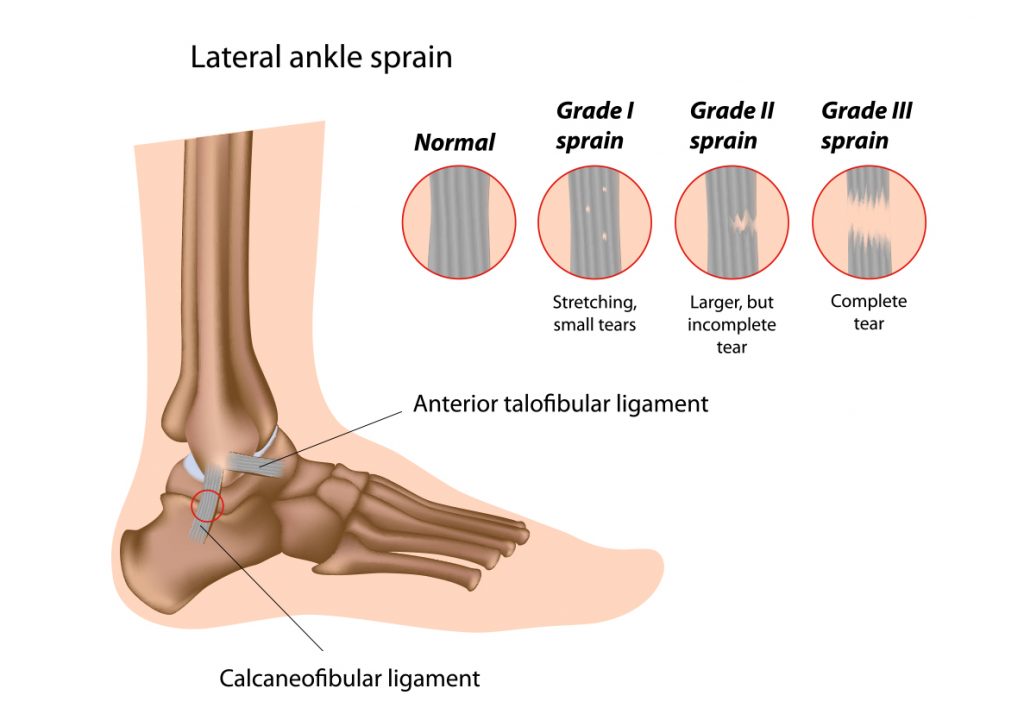The role of ankle ligaments are to hold the ankle bones together and keep you ankle stable during activity. An ankle sprain (rolled ankle) occurs when one of the ligaments of the ankle is overstretched or compressed resulting in a tear.


What is an ankle sprain?
How do you injure ankle ligaments?
Ligament injuries around the ankle joint are among the most common sporting injuries. This is particularly true for sports that include quick changes of direction, sudden stopping, and pivoting maneuvers. Sometimes awkwardly tripping on a curb or rock can also cause an ankle sprain.
In the event of an ankle sprain, the way your ankle moves when you injure it, will give your physio important clues as to which ligaments are sprained. Generally speaking, the lateral (outside) ligaments of the ankle are involved in over 95% of ankle sprains. This occurs with an ‘inversion’ movement, where you roll your foot inward.
What are the symptoms of a sprained ankle?
Ankle sprains typically result in pain, bruising and swelling. Depending on the severity of the injury, the ability to bear weight on the ankle can also be limited.
How is an ankle sprain treated?
Unfortunately, ankle injuries are not always well managed in the acute stage, often people return to activity and sport too early. As a result, this leads to a high rate of repeated ankle sprains and chronic ankle laxity, which ultimately could require surgery.
It is crucial that you employ the RICER rules for the first 48 hours following the injury. These are:
R: Rest from sport
I: Ice through a wet towel
C: Compression bandage and brace
E: Elevate the ankle above horizontal
R: Refer to a physiotherapist
Your physiotherapist will assess your ankle to determine the severity of injury and determine whether an x-ray is necessary. They will then provide you with a specific individualised ankle rehabilitation program to get you back to full function.
Physiotherapy management may include;
- Supporting the ankle with tape or a brace
- Crutches to help you move around while the ligaments heal
- Hands-on treatment to help relax tight muscles around the ankle and improve the ankle flexibility
- Specific strengthening, mobility and balance exercises
If you need further advice regarding the prevention of ankle sprains, or require treatment for an injury, do not hesitate to make an appointment with one of our physios.

